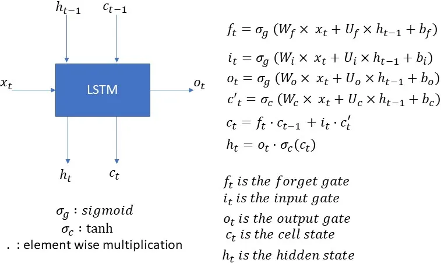Learn everything there is to LSTM Network from What is LSTM and Its Applications?
Introduction
Ever wondered how your phone predicts the next word you’re about to type? Or how virtual assistants understand your voice commands? Well, a big part of that magic comes from something called Long Short-Term Memory Networks, or LSTMs for short. These are not your everyday neural networks; they’re like the memory wizards of the AI world, remembering things for much longer than their cousins, the regular RNNs (Recurrent Neural Networks).
LSTMs At a Glance
| Feature | Scoop |
| Born In | The 1990s, as an incredible upgrade to RNNs |
| Superpower | Remembering stuff for a long time |
| Where You’ll Find Them | From your smartphone’s keyboard to predicting stock prices |
Want to dive deeper into SQL indexes and their importance? Check out our in-depth guide on What Are Indexes in SQL and Why Do We Need Them?
RNNs vs LSTMs?
Now, let’s talk about RNNs and LSTMs. Imagine RNNs as sprinters – great at short distances (or short sequences of data) but tire out quickly (forgetting long-term information). LSTMs, on the other hand, are like marathon runners, built for the long haul. They don’t just process the current input; they remember the lessons from the data they’ve seen before. This difference made LSTMs a favorite for tasks where memory matters, like predicting the next word in a sentence or forecasting weather patterns weeks in advance.
Have you ever wondered how data is stored and retrieved inside a computer’s disk? Discover the inner workings in our article How Is Data Stored and Retrieved Inside a Disk in a Computer?
Core Concepts of LSTM
Understanding LSTM Equations and Their Mathematical Foundations
LSTMs aren’t just smart; they’re mathematically elegant. At their core, they use a series of equations to decide what to remember and what to forget. These equations are like the secret sauce that lets LSTMs perform their memory magic.
They involve a mix of sigmoid and tanh functions – sigmoid deciding the ‘yes’ or ‘no’ (like a gatekeeper), and tanh helping to regulate the information flow.

Detailed Explanation of Each Equation and Its Role
LSTM in Equations
To get technical, let’s look at the key equations of an LSTM cell:
Each step involves a blend of linear algebra and activation functions, balancing between forgetting irrelevant info and adding relevant info.



Visual Diagram of LSTM Structure
Imagine an LSTM as a mini-factory line. Data enters, gets inspected (forget and input gates), refined (cell state), and then packaged (output gate) for its next journey. This factory line is remarkably efficient, keeping only what’s needed and always ready for new data.

Anatomy of an LSTM Cell: Components, Gates, Cell States, and Outputs
Each LSTM cell has three gates: forget, input, and output. The cell state runs through the entire chain, with the gates controlling the flow of information. The beauty lies in how these components interact, making LSTMs capable of learning what to remember and what to forget.

The LSTM Workflow: Data Processing and a Simple Code Example
In action, LSTMs process data one piece at a time, constantly updating their cell state. Here’s a sneak peek at how you might set up a simple LSTM in Python:
Python
import tensorflow as tf
from tensorflow.keras.models import Sequential
from tensorflow.keras.layers import LSTM, Dense
Define the model
model = Sequential()
model.add(LSTM(50, activation=’relu’, input_shape=(sequence_length, features)))
model.add(Dense(1))
model.compile(optimizer=’adam’, loss=’mean_squared_error’)
This code snippet is just the tip of the iceberg. The real fun begins when you start feeding data and tweaking the model for specific tasks!
Want to master the art of indexing in databases? Here’s a deep dive into B and B-Trees in our comprehensive guide, Deep Dive into B and B-Trees and How They Are Useful for Indexing in Database
Unique Features of LSTM
Handling Long-Term Dependencies
LSTMs excel at handling long-term dependencies, which traditional RNNs struggle with. They remember important information from earlier in a sequence to make sense of the present, making them essential in tasks like language translation, where context is crucial.
Solving the Vanishing Gradient Problem
RNNs experience the vanishing gradient problem, making it hard for them to learn from long sequences. LSTMs use gates and cell states to ensure that the gradients don’t vanish, keeping important learnings alive throughout the learning process.
Dive into the load balancing and data distribution world with our Consistent Hashing and Load Balancing article.
Practical Applications of LSTM: Real-World Magic
How LSTM is Changing the Game Across Industries
LSTMs in finance crunch past data to forecast future market movements, helping investors make smarter choices. LSTMs in healthcare are like smart doctors who analyze medical data to predict outcomes, identify diseases, and contribute to drug discoveries. They learn from past cases to improve future diagnoses.
Explore the concepts of caching with our comprehensive guide on LRU Cache.
Conclusion and Future Outlook
As we wrap up our deep dive into the world of LSTMs, it’s clear they are more than just a tech buzzword. They’re the unsung heroes in our smartphones, the silent partners in financial forecasting, and the emerging brains in healthcare innovations. Their ability to remember and utilize long-term data makes them invaluable in a data-driven world.
Wondered how WhatsApp handles its massive user base? Get a peek behind the scenes with our article on WhatsApp System Design.
